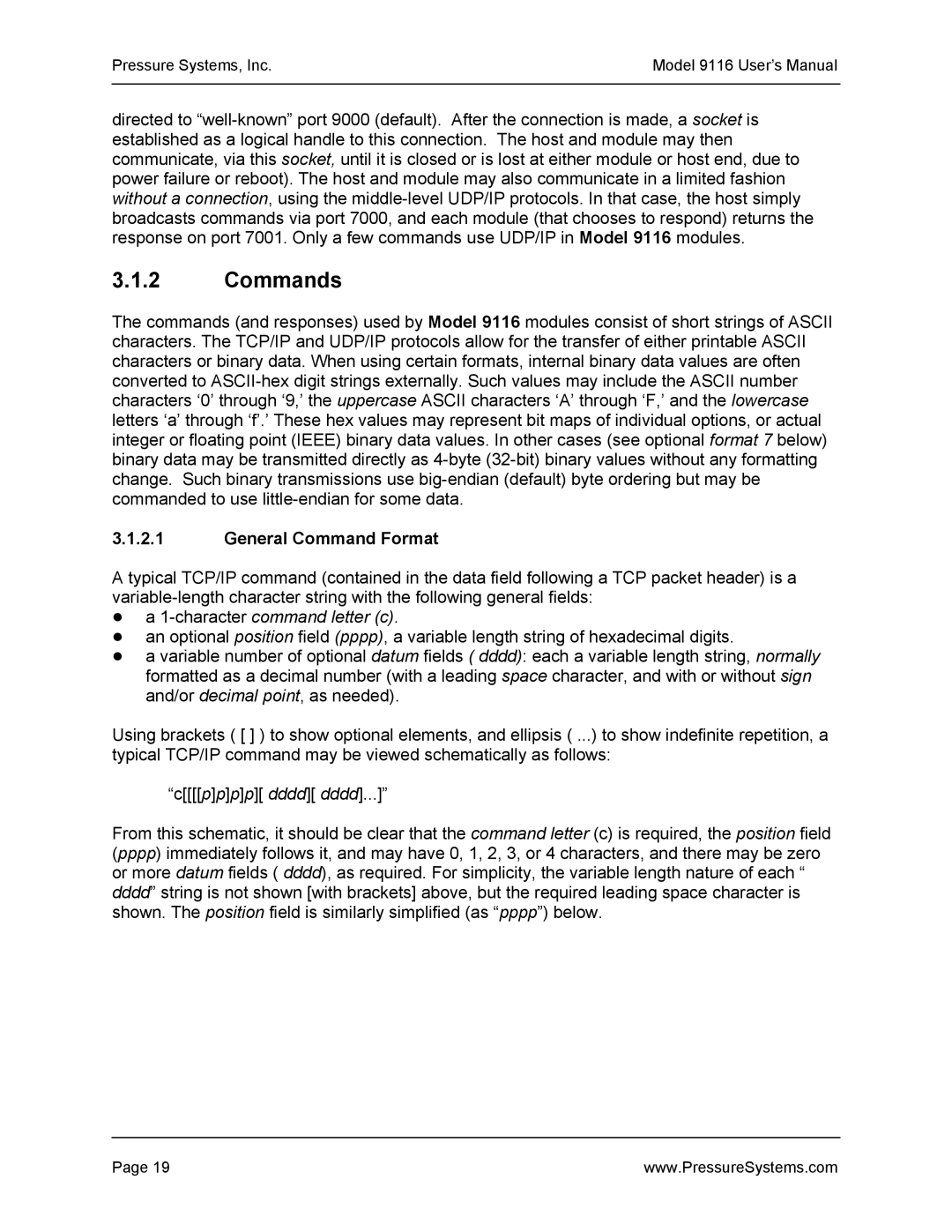Pressure Systems, Inc. | Model 9116 User’s Manual |
|
|
directed to
3.1.2Commands
The commands (and responses) used by Model 9116 modules consist of short strings of ASCII characters. The TCP/IP and UDP/IP protocols allow for the transfer of either printable ASCII characters or binary data. When using certain formats, internal binary data values are often converted to
3.1.2.1General Command Format
A typical TCP/IP command (contained in the data field following a TCP packet header) is a
!a 1-character command letter (c).
!an optional position field (pppp), a variable length string of hexadecimal digits.
!a variable number of optional datum fields ( dddd): each a variable length string, normally formatted as a decimal number (with a leading space character, and with or without sign and/or decimal point, as needed).
Using brackets ( [ ] ) to show optional elements, and ellipsis ( ...) to show indefinite repetition, a typical TCP/IP command may be viewed schematically as follows:
“c[[[[p]p]p]p][ dddd][ dddd]...]”
From this schematic, it should be clear that the command letter (c) is required, the position field (pppp) immediately follows it, and may have 0, 1, 2, 3, or 4 characters, and there may be zero or more datum fields ( dddd), as required. For simplicity, the variable length nature of each “ dddd” string is not shown [with brackets] above, but the required leading space character is shown. The position field is similarly simplified (as “pppp”) below.
Page 19 | www.PressureSystems.com |
